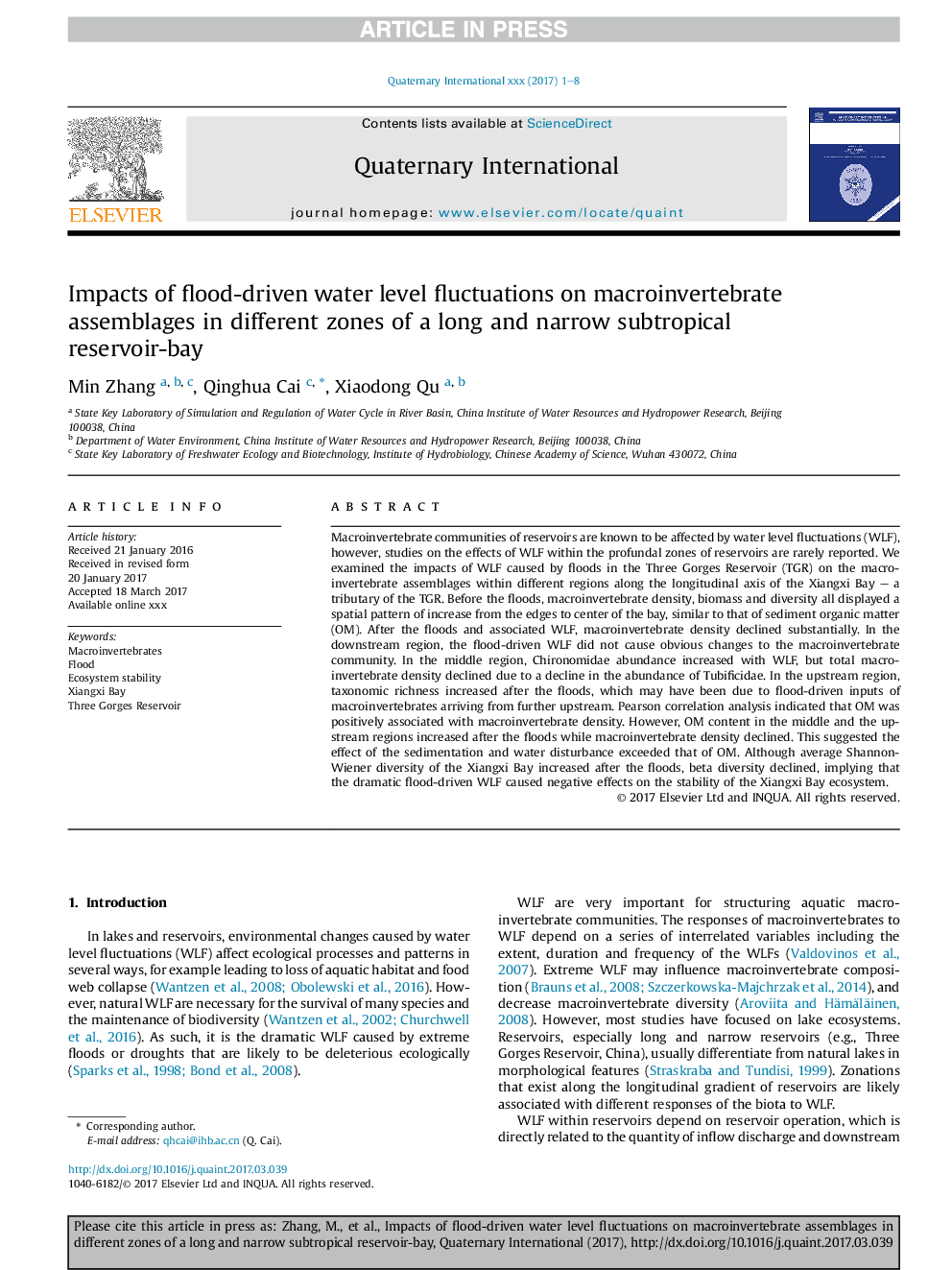| Article ID | Journal | Published Year | Pages | File Type |
|---|---|---|---|---|
| 5113085 | Quaternary International | 2017 | 8 Pages |
Abstract
Macroinvertebrate communities of reservoirs are known to be affected by water level fluctuations (WLF), however, studies on the effects of WLF within the profundal zones of reservoirs are rarely reported. We examined the impacts of WLF caused by floods in the Three Gorges Reservoir (TGR) on the macroinvertebrate assemblages within different regions along the longitudinal axis of the Xiangxi Bay - a tributary of the TGR. Before the floods, macroinvertebrate density, biomass and diversity all displayed a spatial pattern of increase from the edges to center of the bay, similar to that of sediment organic matter (OM). After the floods and associated WLF, macroinvertebrate density declined substantially. In the downstream region, the flood-driven WLF did not cause obvious changes to the macroinvertebrate community. In the middle region, Chironomidae abundance increased with WLF, but total macroinvertebrate density declined due to a decline in the abundance of Tubificidae. In the upstream region, taxonomic richness increased after the floods, which may have been due to flood-driven inputs of macroinvertebrates arriving from further upstream. Pearson correlation analysis indicated that OM was positively associated with macroinvertebrate density. However, OM content in the middle and the upstream regions increased after the floods while macroinvertebrate density declined. This suggested the effect of the sedimentation and water disturbance exceeded that of OM. Although average Shannon-Wiener diversity of the Xiangxi Bay increased after the floods, beta diversity declined, implying that the dramatic flood-driven WLF caused negative effects on the stability of the Xiangxi Bay ecosystem.
Related Topics
Physical Sciences and Engineering
Earth and Planetary Sciences
Geology
Authors
Min Zhang, Qinghua Cai, Xiaodong Qu,
